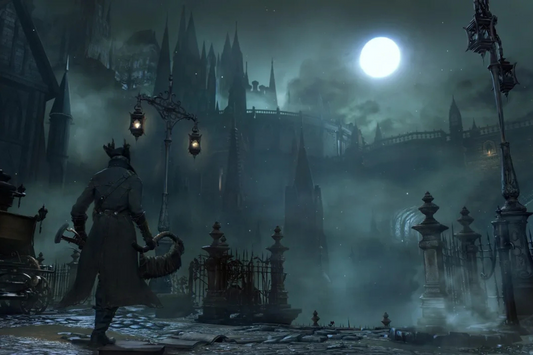Survival games have become one of the most influential and innovative genres in gaming, captivating millions of players with their unique blend of exploration, resource management, and danger. Over the years, the genre has grown immensely, evolving from pixelated block worlds to hyper-realistic environments filled with immersive storytelling. Let’s delve into the history and evolution of survival games, with a particular focus on the groundbreaking contributions of Minecraft, The Forest, and its sequel, Sons of the Forest.
The Roots of Survival Games: Minecraft and the Genre's Genesis
The Birth of Modern Survival Mechanics
The modern survival genre can trace its roots back to the release of Minecraft in 2009 by Mojang. Although there were earlier games with survival elements, such as Don't Starve or Robinson's Requiem, Minecraft brought the genre into mainstream consciousness. Its simple yet compelling gameplay loop—gathering resources, crafting tools, and building shelter—captivated players of all ages.
Key Features That Defined Minecraft:
- Resource Gathering: Players needed to mine, chop, and dig to acquire materials for crafting.
- Day-Night Cycle: The need to survive the hostile creatures that appeared at night added an extra layer of tension.
- Creative Freedom: Beyond survival, the game allowed players to build vast, intricate structures, blurring the line between sandbox and survival.
This combination of freedom and peril laid the groundwork for what would become staples of the genre. The game's low barrier to entry, alongside its infinite replayability, made it a cultural phenomenon and a blueprint for survival games to come.
Survival Horror Meets Realism: The Forest
A Dark Turn for the Genre
Released in 2014 by Endnight Games, The Forest pushed the survival genre into darker, more realistic territory. While Minecraft focused on creativity and exploration, The Forest leaned into survival horror, combining resource management with a gripping narrative and psychological tension.
Key Innovations in The Forest:
- Immersive Environment: The game introduced lush, realistic environments where players could scavenge for supplies while avoiding dangers lurking in the shadows.
- AI-Driven Enemies: The cannibalistic tribes in The Forest behaved unpredictably, creating a sense of dread and urgency. They would observe, retreat, or attack based on the player’s actions.
- Story Integration: Unlike many survival games, The Forest integrated a strong narrative element, tasking players with uncovering the mystery of a missing child while surviving the wilderness.
This combination of survival gameplay with horror elements set The Forest apart. It proved that survival games could tell engaging stories while maintaining the core gameplay loop of resource management and crafting.
The Next Level: Sons of the Forest
Expanding on a Strong Foundation
The Forest was a tough act to follow, but Endnight Games raised the bar even higher with its sequel, Sons of the Forest, released in 2023. The game built upon the mechanics of its predecessor, introducing new features, improved AI, and a more expansive world.
What Makes Sons of the Forest Stand Out:
- Advanced AI Companions: Players could recruit AI-controlled companions, such as Kelvin, to assist with tasks like gathering resources or defending against enemies.
- Dynamic Weather and Seasons: The addition of changing seasons affected gameplay, with winter bringing unique survival challenges such as limited food resources and harsher conditions.
- Expanded Crafting System: The game introduced a more complex crafting and building system, allowing players to construct intricate structures and traps.
- Branching Storylines: Sons of the Forest expanded the narrative potential of survival games, offering players multiple endings based on their decisions.
By blending advanced technology with the lessons learned from the first game, Sons of the Forest demonstrated the genre’s potential for growth and innovation.
The Core Pillars of Survival Games
As survival games have evolved, several key elements have emerged as defining features of the genre:
1. Resource Management
Gathering materials and managing resources is a hallmark of survival games. From Minecraft’s simple mining mechanics to Sons of the Forest’s intricate crafting systems, this mechanic encourages players to plan and strategize.
2. Exploration and World Design
Survival games often feature expansive, detailed worlds that reward curiosity. The blocky landscapes of Minecraft contrast with the dense, realistic forests of The Forest, yet both offer a sense of discovery that keeps players engaged.
3. Survival Mechanics
Hunger, thirst, and health management add an extra layer of challenge. Games like The Forest and Sons of the Forest emphasize these mechanics, requiring players to hunt, cook, and even fish to stay alive.
4. Threats and Danger
From Minecraft’s Creepers to The Forest’s cannibals, survival games keep players on edge by introducing enemies and environmental hazards. These threats create tension and drive the gameplay forward.
5. Narrative Integration
While early survival games were more focused on gameplay mechanics, modern titles like The Forest and Sons of the Forest show how storytelling can enhance the experience, giving players a purpose beyond mere survival.
How Survival Games Reflect Player Desires
The success of survival games speaks to a deep human fascination with resilience and creativity. These games allow players to test their resourcefulness in the face of adversity, fulfilling a primal desire to survive and thrive.
Escapism in Open Worlds
Survival games offer a form of escapism that feels both immersive and rewarding. Whether it’s building a utopia in Minecraft or surviving the horrors of The Forest, these games provide a sense of accomplishment and autonomy.
Community and Collaboration
Many survival games encourage multiplayer interactions, fostering cooperation and competition. From teaming up to fend off mobs in Minecraft to collaborating on massive builds, the social aspect of survival games has become a key driver of their popularity.
The Future of Survival Games
As technology continues to advance, the survival genre is poised to reach new heights. Here are a few trends to watch for:
1. Increased Realism
With the rise of VR and improved graphical fidelity, future survival games may offer even more realistic environments and mechanics. Imagine a VR survival game where you must physically gather resources or build shelters with your own hands.
2. Procedural Storytelling
AI and procedural generation could allow for dynamic storylines that adapt to player actions, creating unique narratives in every playthrough.
3. Cross-Genre Hybrids
The survival genre is already blending with others, such as RPGs and horror. Future games may continue to experiment with genre fusion, creating experiences that are both familiar and innovative.
Conclusion
The evolution of survival games, from Minecraft’s humble beginnings to the ambitious realism of Sons of the Forest, highlights the genre’s incredible growth and versatility. These games have redefined what it means to play in an open world, offering players both freedom and challenge. As technology and player expectations evolve, the survival genre will undoubtedly continue to push boundaries, capturing our imaginations and testing our mettle in new and exciting ways.
Whether you’re building blocky mansions in Minecraft or braving the eerie wilderness of The Forest, the survival genre offers an unparalleled gaming experience that shows no signs of slowing down.








